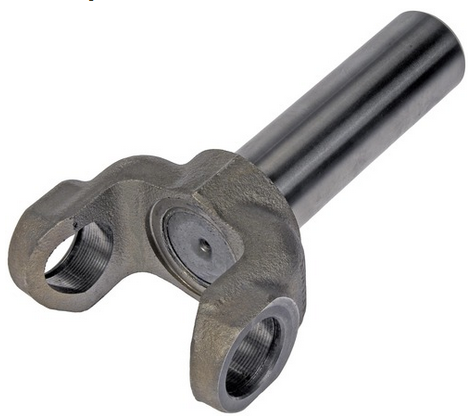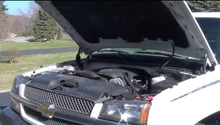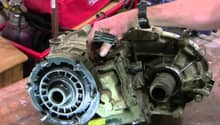Chevrolet Silverado: Why Does My Transmission Clunk?
There are a couple of issues that can cause this nasty sound. You can easily make it a lot better, so you can proudly drive your truck.
This article applies to the Chevrolet Silverado GMT800, GMT900, and K2XX (1999-Present).
There is not much of anything that irritates a person more than clunks, clanks, and rattles when driving a vehicle. Your Silverado may suffer from a clunk coming from the drivetrain that could be caused by a few things. One is a known issue that GM says is nothing to worry about, while another is a normal wear item. Either way, there are ways to fix the problem to keep your truck running nice, quiet, and smooth.

Materials Needed
- Replacement u-joints for your specific vehicle
- Replacement slip joint lube
- Wrench to fit your vehicle's u-joint strap bolts
Step 1 – Check your u-joints
Loose u-joints cause a terrible clunk when you put your truck in reverse or drive, and are actually dangerous. The u-joint is a component in the middle of your truck's drive shaft that allows the drive shaft to flex or rotate, which is based on rough pavement or suspension movement. The joint can fail, causing binding and (ultimately) will damage the drive shaft beyond repair. You do not want to throw out a drive shaft because your truck will become permanently parked.
U-joints are a precision part that takes a beating. If they are worn and loose, they will cause a clunk when shifting between gears.

To find out if this is the cause, follow the steps below:
- If you need to jack your truck up to get under it, do so.
- Put the emergency brake on and your truck in neutral.
- Putting blocks behind and in front of a wheel is extra insurance.
- Grab the drive shaft as well as the differential yoke, turn it one way and then the other.
- Look and listen for slack in the u-joints.
- You will be able to tell if one is loose. That is the culprit.
If all of your u-joints are tight, try the next step.
(Related Article: How to Jack Up Your Truck - ChevroletForum.com)
Step 2 – Check the transmission slip joint
GM has issued a technical service bulletin on driveline 'Jolt and Slam' or clunking. They admit that there is a problem, but that it is in-tolerance and for the dealer not to deal with it piecemeal. You can, however, remove the slip joint from the transmission or transfer case, clean the inside of it, and then lubricate the inside of the joint well with grease.

After you replace the drive shaft, that little 'Jolt and Slam" should be gone like a freight train.
Pro Tip
A little bit of play in the slip joint can cause a big clunk, so this works well. It is a well known problem with this series of GM truck.
There is one other thing that you can check out if neither of these steps has not cured the issue. Continue to Step 3.
Step 3 – Check fuel tank
Some owners have said that fuel sloshing in the fuel tank makes a clunking noise. This should be a minor noise, but if you have really good ears, you can check.
- The fuel tank or tanks will need to be half-full or less.
- With all of the accessories turned off, the doors open, and on a flat road, pull the truck forward slowly, and brake. Then, back up and brake.
- If the fuel is making a noise as it sloshes, you should be able to hear it if there truly is a clunking noise coming from a tank.
- There really isn't a fix for this, except for keeping the tank or tanks full of fuel so it does not slosh.

More than likely doing one of the steps above will fix your truck. And better yet, it should take care of the clunk for a long time.
Related Discussions
- Hopefully Gets Fixed - ChevroletForum.com
- Loud Driveline Clunk - ChevroletForum.com
- Loud Reverse Clunk - ChevroletForum.com
- Clunk When Shifting Into Reverse - ChevroletForum.com






